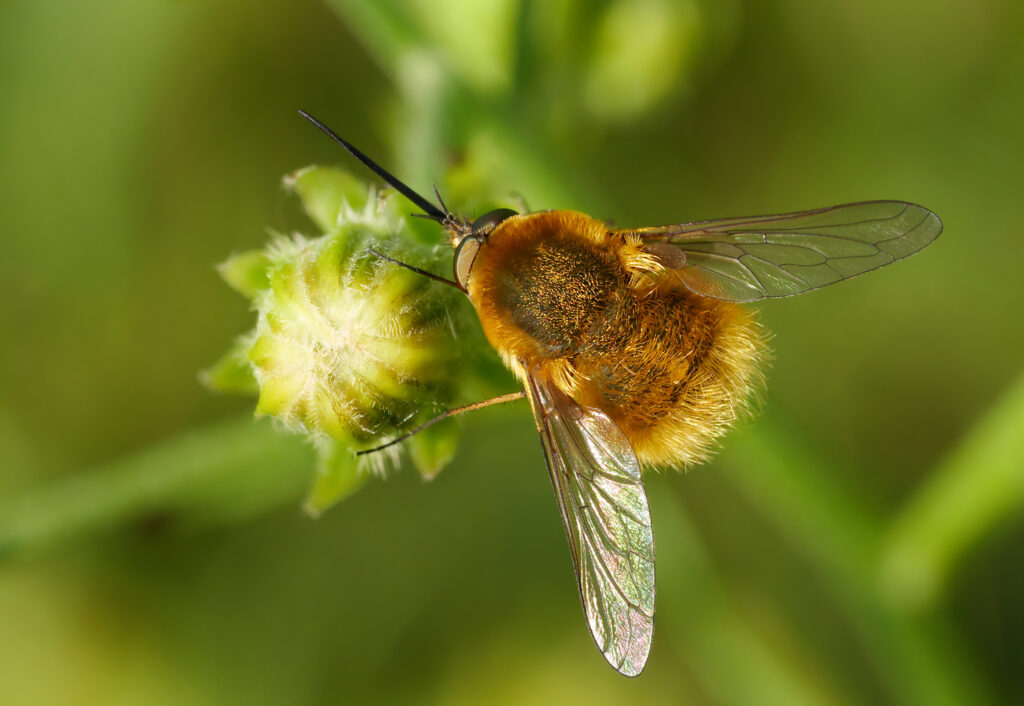
Introduction
Here we are in the first week of May and the weather is only just warming up enough for first hive inspections here in the north.
Thank you to all you generous readers who donated to the upkeep, maintenance, and security of the website, and to everyone who donated guest blogs this month.
This week, Stephen McCarthy shares his review of Lars Chittka’s “Mind of a Bee” with us, and also his penchant for pulmonaria and bee-flies. Bee-flies mimic bumble bees but they are actually true flies and members of the order of Diptera. They are quite arresting in appearance like fluffy big bees with a very long proboscis for drinking nectar as they hover over flowers.
Thank you, Stephen, and it’s over to you.
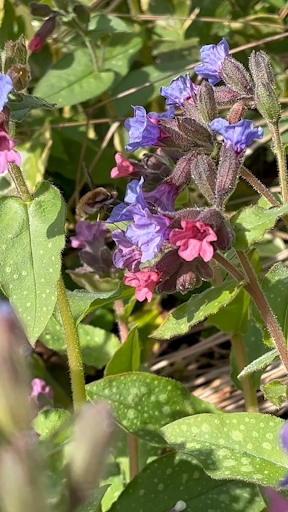
They are drawn to blue and violet flowers. When I planted these Pulmonaria spp. (lungwort) over ten years ago I had never heard of bee-flies but they arrived. They are good pollinators and do no harm, to us at any rate. This one is the dark- edged bee-fly and when she stops on a flower you can clearly see her wing markings. They have only one pair of wings thus they are flies. But the most charming feature has to be the proboscis. It must be its own body length.
The Dark Side
Bee-flies are parasitoids. Their larvae are parasites on other creatures and kill them. They mostly choose mining bee larvae and solitary wasps. After she lays her eggs, the female bee-fly, keeps them attached at the end of her abdomen. She goes to the ground to coat them in sand or earth. The keeps them from drying out and/or camouflages them. She then goes to a mining bee burrow, when the bee is absent and she carpet bombs the entrance to the burrow with her eggs. Only a few of these eggs will survive so she has to lay large numbers.
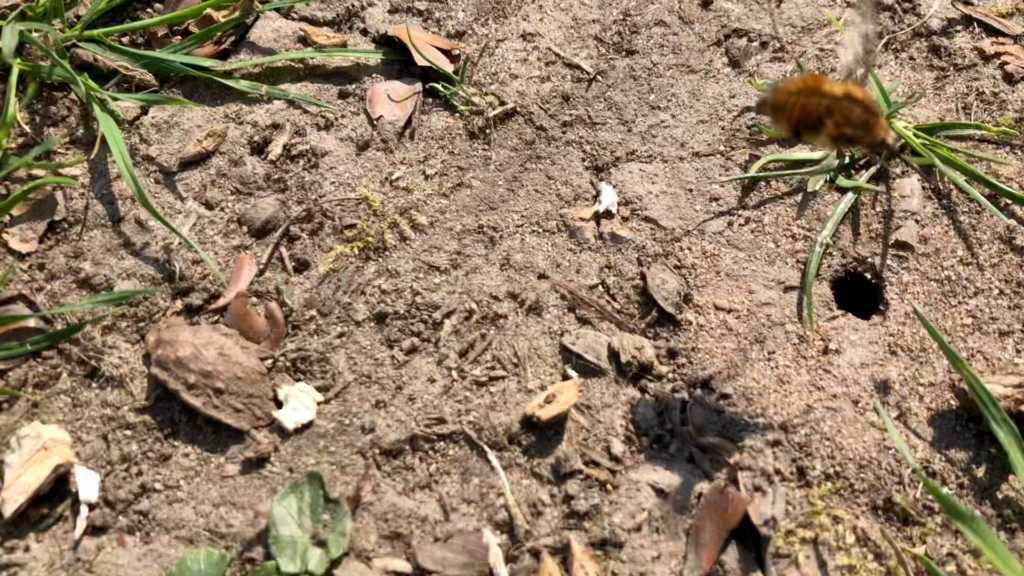
The larva crawls down to the bottom of the burrow and in time and after another metamorphosis it attaches itself to the mining bee larva and eats it. Eventually the bee larva dies but not quickly. The bee-fly larva then pupates to emerge the next spring as a fully formed bee-fly. Despite this gruesome start the scientific opinion is that these species have lived together for aeons and the fly is not a threat to bee numbers.
These wonderful creatures are always welcome in my garden. They are so beautiful to watch and that proboscis never fails to cheer me up.
The Mind of a Bee
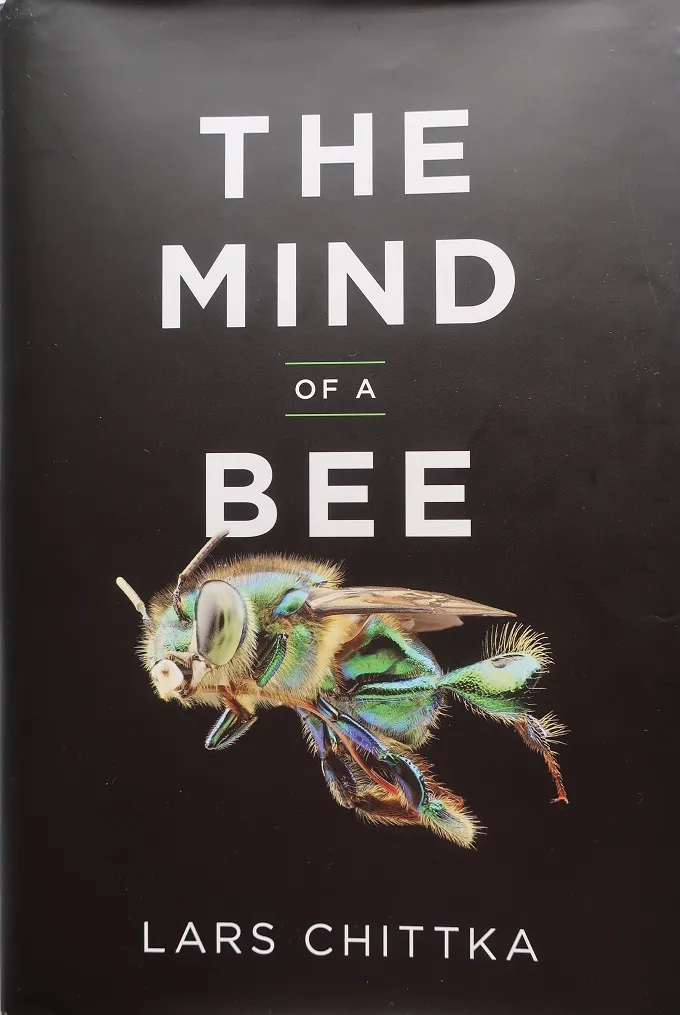
Lars Chittka.
Princeton University Press.
Paperback ISBN 978-0-691-25389-3
Amazon Cost currently £8.97
The Mind of a Bee.
“This book takes readers deep into the sensory world of bee, showing how they are profoundly smart, have distinctive personalities, can recognise flowers and human faces, exhibit basic emotions, use simple tools, solve problems and learn by observing others.” Back Cover Blurb.
Thus reads the blurb on the back cover of “The mind of a Bee” by Lars Chittka. These are large claims. I must say I approached the book as a sceptic. After all, bees just couldn’t have enough computing power packed into their tiny heads. The author argues that bees who do not have the capacity to store large memories have evolved instead a rule- based memory. And this short circuit allows them to perform at a high level without carrying the huge storage space in their heads.
The book does take us on a wondrous journey through the sensory world of the bee. In fact, each of the claims set out in the blurb quoted above gets at least a chapter detailing the science behind them. Their visual range, including polarised light, their spatial awareness and memory, their recognition capacity, their ability to learn from other’s behaviour are all expanded upon, and convincingly so. Chittka makes the important point that earlier bee studies recorded that bee’s capacity to discriminate was poor. But that these studies were reward- based. They gave a sugar reward when a bee got it right. Whereas more recent studies are both reward and penalty based. Bees are rewarded when they get it right but get taste of bitter quinine if they get it wrong. Not surprisingly bees showed far more discrimination in the later studies. There is a trade-off between speed and accuracy.
As every beekeeper knows there are bees and bees. Not all bees, worker bees, are the same. When I had my first experience of drone laying workers my second thought was why do only some workers start to lay? And my guess would be that not all worker bees are equally susceptible to the queen pheromone which keeps their ovaries undeveloped. My third thought was maybe there are always some drone- laying workers in the hive with an active queen, how would we know apart from a slightly irregular brood pattern? A common thread in this book is how different bees are from each other. And this shouldn’t be a surprise. They carry different genetics.
This argument in turn impinges on the oft recited view that the bee colony is a “super organism” and by implication the individual bees are merely interchangeable units, mindless in themselves. But Chittka convinces that;
“Only individual living beings have minds, or intelligence. Individual social insects, like individual humans, have dedicated socio-cognitive processes that facilitate group co-ordination … which in turn can benefit the group as a whole, as well as individual members. … In humans, as in bees, collective enterprises might appear to an outsider as a form of swarm intelligence that necessitates a collective mind.” Page 183
Lars Chittka is a generous writer in that he takes pains to credit his collaborators and students for their part in his researches. His style is clear and flowing and as far as it can be in describing scientific experiments and conclusions, non- technical. In addition, he has a real awareness for his predecessors in the field of bee research. He details research and insights into bees well back into the 19th century and his praise for these early pioneers is both warm and affectionate. The illustrations in the book are superb and add greatly to a comprehension of the written text. I would urge any beekeeper interested in how bees see the world, and how they make choices, to read this book.
I am not a scientist and have no specialist knowledge to bring to this review. I am a beekeeper and I have a general interest in science. That said. Am I convinced? In general, I would answer yes. Bees clearly have a grasp on the real world that allows them to survive and thrive within it. From this book it is clear that individual bees have a wide range of autonomy and capacity to influence how they use it.
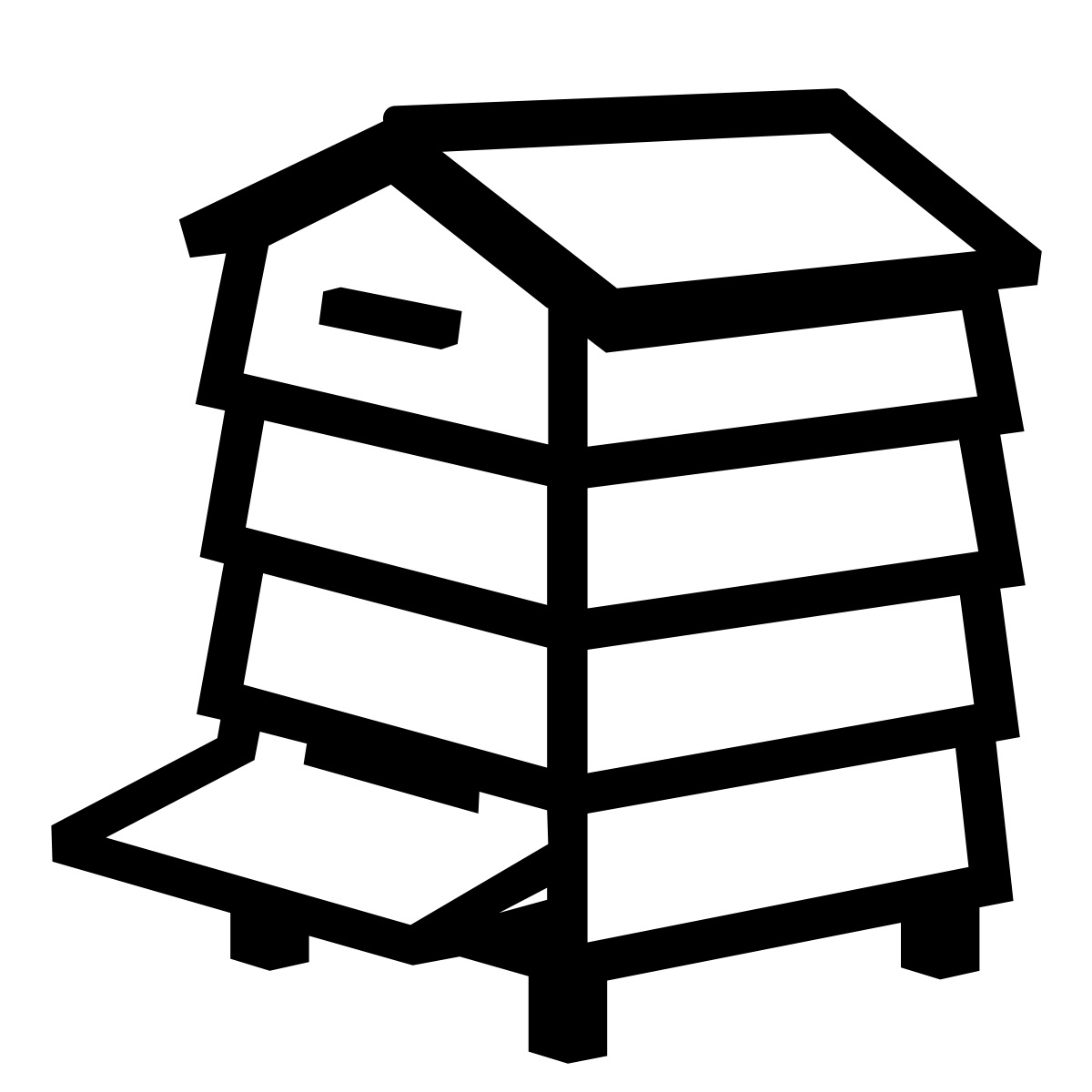
Love the bee- fly! Fascinating
Cool isn’t he. Thank you for commenting, Susan.
A very synchronistic blog,as I noticed 3 bee-flies for the first time,pollinating a bed of aubretia which is indeed a purple flower.Having “bee watched” that area for 6 years.
Glad that the blog appealed to you, Gelda. Thank you for commenting.
I have found on my cold conservatory floor, which I now know is a bee fly beautiful creature it is not dead but was on its back I gently righted it and put it to warm in the sun I will give sugary water any suggestions greatly appreciated kind regards Karen.
Hello Karen, I wouldn’t have done anything differently and you have done your best for this animal. It will be better prepared to cope back outside. Ann.
Very interesting.
Glad you enjoyed the post, Philip. Thank you for commenting.